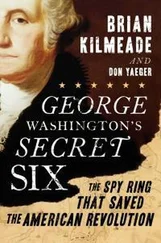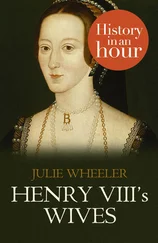GEORGE WASHINGTON
History in an Hour
David B. McCoy
About History in an Hour About History in an Hour Introduction Early Years in the Colony of Virginia French and Indian War Marriage and Gentleman Farmer Growing Colonial Resentment Commander-in-Chief The Greatest Man in the World Washington’s Short-lived Return to Mount Vernon and the Constitutional Convention Ratification and Election The First Term in Office The Second Term: Relations at Home Relations with Britain A Farewell into Immortality Appendix 1: Key Players Appendix 2: Timeline of George Washington Copyright Got Another Hour? About the Publisher
History in an Hour is a series of ebooks to help the reader learn the basic facts of a given subject area. Everything you need to know is presented in a straightforward narrative and in chronological order. No embedded links to divert your attention, nor a daunting book of 600 pages with a 35-page introduction. Just straight in, to the point, sixty minutes, done. Then, having absorbed the basics, you may feel inspired to explore further.
Give yourself sixty minutes and see what you can learn …
To find out more visit http://historyinanhour.com or follow us on Twitter: http://twitter.com/historyinanhour
Contents
Title Page GEORGE WASHINGTON History in an Hour David B. McCoy
About History in an Hour About History in an Hour About History in an Hour Introduction Early Years in the Colony of Virginia French and Indian War Marriage and Gentleman Farmer Growing Colonial Resentment Commander-in-Chief The Greatest Man in the World Washington’s Short-lived Return to Mount Vernon and the Constitutional Convention Ratification and Election The First Term in Office The Second Term: Relations at Home Relations with Britain A Farewell into Immortality Appendix 1: Key Players Appendix 2: Timeline of George Washington Copyright Got Another Hour? About the Publisher History in an Hour is a series of ebooks to help the reader learn the basic facts of a given subject area. Everything you need to know is presented in a straightforward narrative and in chronological order. No embedded links to divert your attention, nor a daunting book of 600 pages with a 35-page introduction. Just straight in, to the point, sixty minutes, done. Then, having absorbed the basics, you may feel inspired to explore further. Give yourself sixty minutes and see what you can learn … To find out more visit http://historyinanhour.com or follow us on Twitter: http://twitter.com/historyinanhour
Introduction Introduction George Washington has become such an institutional figure, at least in the United States, that the source of his prominence is easily lost. Cities, streets, bridges, schools, parks, and an entire State have all been named in his honour. His image is on the US currency, coins and postage stamps. Many manufacturers, keen for association with his reputation of virtue, strength and honesty, put his image on their products to boost sales. As recently as 2010, Washington was shown leading a charge in a Dodge Challenger TV commercial. Turning him into a symbol, however, risks losing him as a man. Born into a middle-class family, Washington became one of the richest men in the colonies. By the age of twenty-two, his name was well known on both sides of the Atlantic. He was unanimously elected as commander-in-chief of an army that would go on to win independence. Behind the scenes, he orchestrated a coup d’état which resulted in the creation and implementation of the Constitution, still used in the United States today. Subsequently, he went on to be unanimously elected as its first president. In voluntarily resigning his office, Washington singlehandedly redefined the idea of greatness itself. Formerly, ‘great’ leaders earned esteem by conquering an enemy and subduing its people; during the Age of Divine Right, greatness was a reflection of the ruler’s ability to put down threats to the throne. Washington defied these definitions when he walked away from power twice, at the end of the Revolution and after the presidency (which he could have held for life). When compared with fellow American leaders, Washington was not a particularly original thinker, but his ego-less leadership proved a vital and assured presence. So who was the man George Washington, what did he achieve, and why is he still considered one of the most influential people in history? This, in an hour, is the story of George Washington.
Early Years in the Colony of Virginia
French and Indian War
Marriage and Gentleman Farmer
Growing Colonial Resentment
Commander-in-Chief
The Greatest Man in the World
Washington’s Short-lived Return to Mount Vernon and the Constitutional Convention
Ratification and Election
The First Term in Office
The Second Term: Relations at Home
Relations with Britain
A Farewell into Immortality
Appendix 1: Key Players
Appendix 2: Timeline of George Washington
Copyright
Got Another Hour?
About the Publisher
Introduction
George Washington has become such an institutional figure, at least in the United States, that the source of his prominence is easily lost. Cities, streets, bridges, schools, parks, and an entire State have all been named in his honour. His image is on the US currency, coins and postage stamps. Many manufacturers, keen for association with his reputation of virtue, strength and honesty, put his image on their products to boost sales. As recently as 2010, Washington was shown leading a charge in a Dodge Challenger TV commercial. Turning him into a symbol, however, risks losing him as a man.
Born into a middle-class family, Washington became one of the richest men in the colonies. By the age of twenty-two, his name was well known on both sides of the Atlantic. He was unanimously elected as commander-in-chief of an army that would go on to win independence. Behind the scenes, he orchestrated a coup d’état which resulted in the creation and implementation of the Constitution, still used in the United States today. Subsequently, he went on to be unanimously elected as its first president. In voluntarily resigning his office, Washington singlehandedly redefined the idea of greatness itself. Formerly, ‘great’ leaders earned esteem by conquering an enemy and subduing its people; during the Age of Divine Right, greatness was a reflection of the ruler’s ability to put down threats to the throne. Washington defied these definitions when he walked away from power twice, at the end of the Revolution and after the presidency (which he could have held for life).
When compared with fellow American leaders, Washington was not a particularly original thinker, but his ego-less leadership proved a vital and assured presence. So who was the man George Washington, what did he achieve, and why is he still considered one of the most influential people in history?
This, in an hour, is the story of George Washington.
Early Years in the Colony of Virginia
George Washington was born on 22 February 1732 in Westmoreland County, Virginia, son of Augustine Washington, a leading planter in the area. Augustine’s first wife died in 1729, leaving him two sons, Lawrence and Augustine Jr, and a daughter, Jane. Augustine Sr soon married Mary Ball with whom he had six children, the first of which was George. Mary was wealthy in her own right, and reputedly a self-centred and formidable woman. In addition to inheriting her strong health and disposition to endure hardship, George also seemed to have inherited her temper, which he struggled his whole life to control.
By 1738, the family had moved to a plantation near Fredericksburg, Virginia where George spent much of his youth. This period remains the least documented and understood part of his life. Many of the widely accepted fables of George’s youth concern his physical strength and honesty as told by his early (and unreliable) biographer, Mason Locke ‘Parson’ Weems.
Читать дальше












